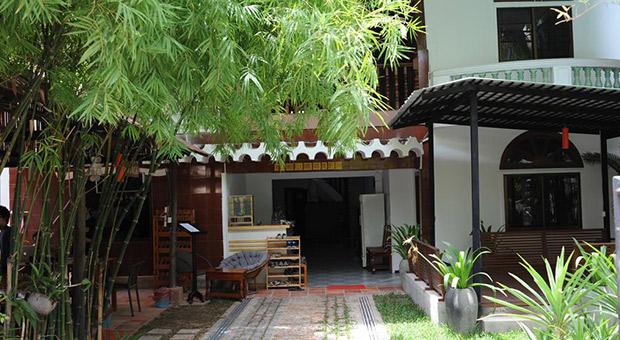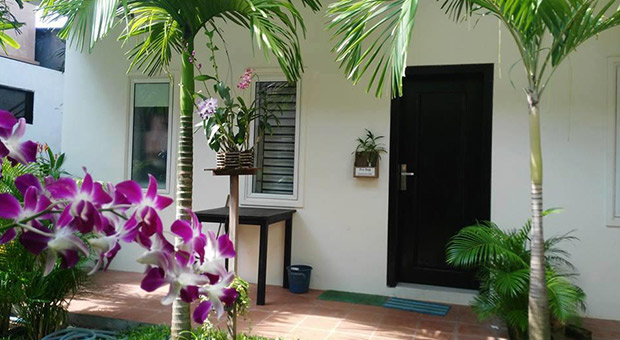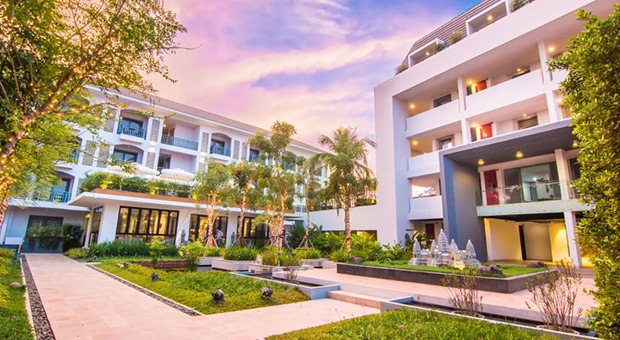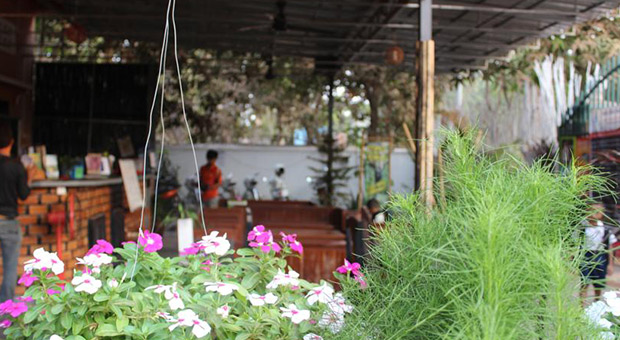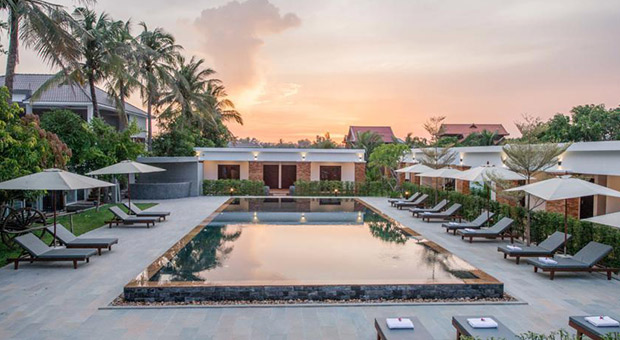- Home
- Siem Reap Travel Guide
- Preah Khan Temple
Preah Khan Temple
Preah Khan Temple
- Travel Location Siem Reap
Preah Khan is a temple at Angkor, Cambodia, built in the 12th century for King Jayavarman VII to honor his father. It is located northeast of Angkor Thom and just west of the Jayatataka baray, with which it was ...
OVERVIEW
Preah Khan Temple, sometimes transliterated as Prah Khan, is a temple at Angkor, Cambodia, built in the 12th century for King Jayavarman VII. It is located northeast of Angkor Thom and just west of the Jayatataka baray, with which it was associated. It was the centre of a substantial organisation, with almost 100,000 officials and servants. The temple is flat in design, with a basic plan of successive rectangular galleries around a Buddhist sanctuary complicated by Hindu satellite temples and numerous later additions. Like the nearby Ta Prohm, Preah Khan has been left largely unrestored, with numerous trees and other vegetation growing among the ruins.
Video Travel Inspiration
Preah Khan temple is located 2 kilometers north-east of Angkor Thorn on the Grand Circuit. The temple was built in the second half of the 12th century in AD 1191 by King Jaya-varman VII, dedicating to his father Dharanindravarman. The Buddhist complex covers 56 hectares served as the nucleus of a group that includes Neak Pean and Ta Som, located 4 kilometers long Jayatataka Baray—the last of the great re¬servoirs to be built in Angkor.
The inscription indicates that Preah Khan was built on the battle site where King Jaya-varman VII finally defeated the Chams. In those days it was known as Nagarajayacri which mean the city of Preah Khan.
Four concentric ramparts subdivide Preah Khan. The outer or fourth wall, which is encircled by a wide moat, today en¬closes a large tract of jungle, formerly the living quarters of the monks, students and attendants of Preah Khan. The second rampart delineated the principle religious compound of about four hectares within which there is a dense concen¬tration of temple and shrines. The central complex is Bud¬dhist. The northern and western sectors are dedicated to
Brahmanism— Vishnu (west) and Shiva (north), whilst the southern sector is a place of ancestor worship. The eastern sector forms the grand entrance to the central shrine.
A place for a king located near Preah Khan temple is called Veal Reacheak or Preah Reachea Dak. It is 1,500 meters long and 1,200 meters wide. Nearby about 700 meters north of Preah Khan temple along the road to Angkor Thorn district is another small temple called Ptu. The temple was made of laterite.
The History of Preah Khan Temple
Preah Khan was built on the site of Jayavarman VII's victory over the invading Chams in 1191. Unusually the modern name, meaning "holy sword", is derived from the meaning of the original—Nagara Jayasri (holy city of victory). The site may previously have been occupied by the royal palaces of Yasovarman II and Tribhuvanadityavarman. The temple's foundation stela has provided considerable information about the history and administration of the site: the main image, of the bodhisattva Avalokiteśvara in the form of the king's father, was dedicated in 1191 (the king's mother had earlier been commemorated in the same way at Ta Prohm). 430 other deities also had shrines on the site, each of which received an allotment of food, clothing, perfume and even mosquito nets; the temple's wealth included gold, silver, gems, 112,300 pearls and a cow with gilded horns. The institution combined the roles of city, temple and Buddhist university: there were 97,840 attendants and servants, including 1000 dancers[5] and 1000 teachers.
The temple is still largely unrestored: the initial clearing was from 1927 to 1932, and partial anastylosis was carried out in 1939. Since then free-standing statues have been removed for safe-keeping, and there has been further consolidation and restoration work. Throughout, the conservators have attempted to balance restoration and maintenance of the wild condition in which the temple was discovered: one of them, Maurice Glaize, wrote that;
The temple was previously overrun with a particularly voracious vegetation and quite ruined, presenting only chaos. Clearing works were undertaken with a constant respect for the large trees which give the composition a pleasing presentation without constituting any immediate danger. At the same time, some partial anastylosis has revived various buildings found in a sufficient state of preservation and presenting some special interest in their architecture or decoration.
Since 1991, the site has been maintained by the World Monuments Fund. It has continued the cautious approach to restoration, believing that to go further would involve too much guesswork, and prefers to respect the ruined nature of the temple. One of its former employees has said, "We're basically running a glorified maintenance program. We're not prepared to falsify history". It has therefore limited itself primarily to stabilisation work on the fourth eastern gopura, the House of Fire and the Hall of Dancers.
Related Hotels in Siem Reap
Orient D’Angkor Hotel
Next to Siem Reap International School, Orient D'Angkor Hotel has an outdoor pool, a gym and massage treatments. Only 850 m from National Road 6th, it also provides free Wi-Fi at its lobby. Free parking is also available. The air-conditioned ...
The City Premium Guesthouse
Nestled in Central Siem Reap, a 10-minute walk from the Old Market, the charming The City Premium Guesthouse offers free one way airport pick-up services and value-for-money rooms with free WiFi access. The City Premium Guesthouse is a ...
Mada Apartment
Featuring air conditioning, Mada Apartment offers accommodation in Siem Reap, 900 m from Pub Street. A free airport shuttle service is provided. The accommodation comes with a cable flat screen TV. Some units include a terrace and/or balcony. ...
Damrei Angkor Hotel
Damrei Angkor Hotel pays homage to the word 'elephant' in Khmer and offers accommodation in Siem Reap. The hotel has an outdoor saltwater pool as well as spa facilities on site. Guests can enjoy a meal at the the hotel's in-house restaurant. ...
Hostel Salakamreuk
Located in Siem Reap, 1.4 km from Pub Street, Hostel Salakamreuk features a barbecue and sun terrace. Guests can enjoy the on-site restaurant. Free private parking is available on site. Certain rooms feature a seating area where you can relax. ...
Elegant Angkor Resort & Spa
Nestled within private gardens, Elegant Angkor Resort & Spa offers accommodation away from the hustle and bustle of Siem Reap. Guests have access to the outdoor swimming pool, steam room, sauna and fitness centre. Meals can be enjoyed at the ...
Free Property Registration
We market your property to a large audience of travellers worldwide, Join us today.







